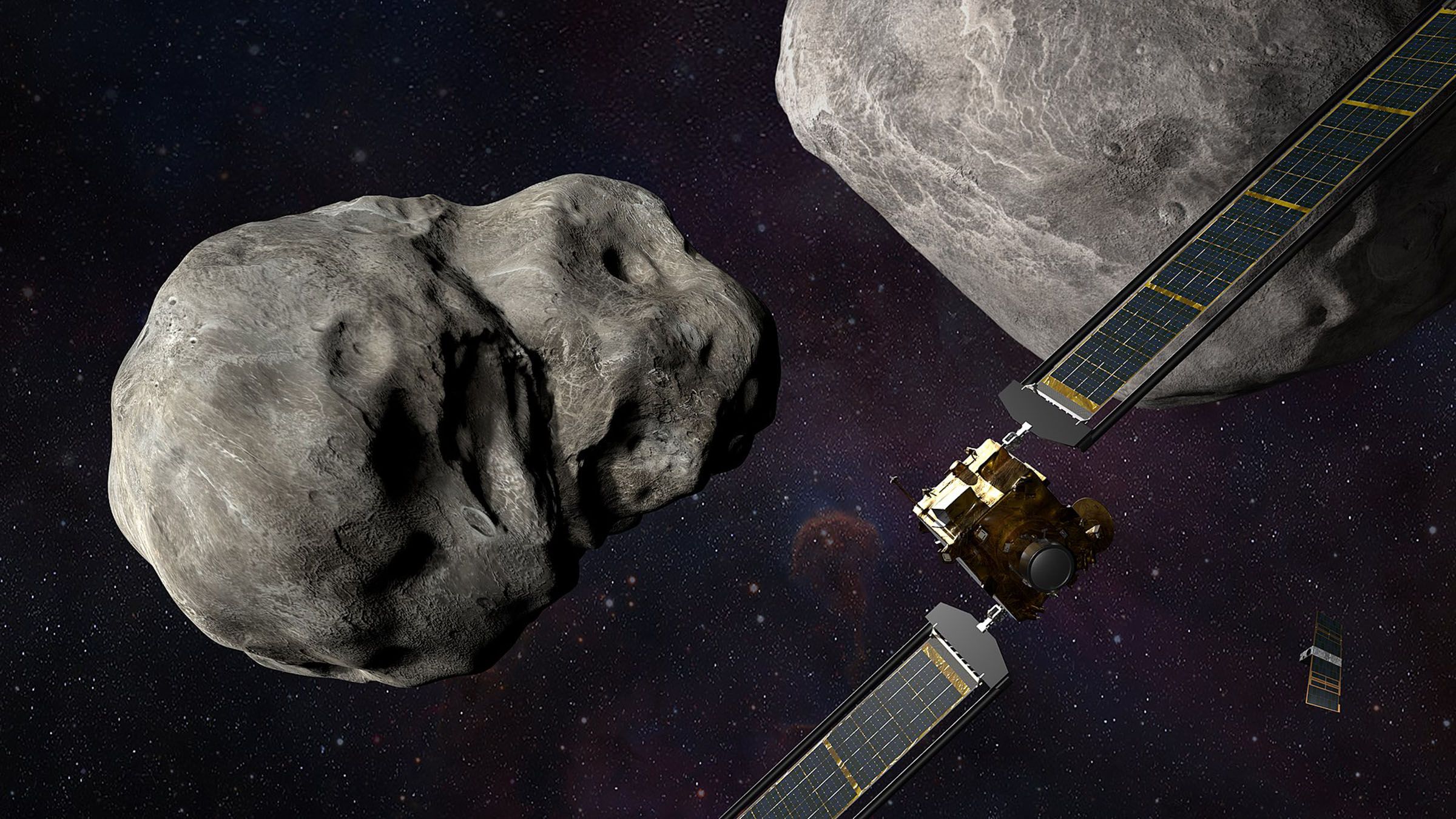NASA attempts to smack a spacecraft into an asteroid to slightly deflect its orbit, and if it succeeds, it’s a step forward to the Earth’s planetary defense system against cosmic threats.
The National Aeronautics and Space Administration (NASA) will attempt to deliberately smack a spacecraft into an asteroid to slightly deflect its orbit to stop cosmic objects from devastating life on Earth.
The Double Asteroid Redirection Test (DART) spaceship launched last November from California, is approaching the target fast and will strike at roughly 14,000 miles per hour or 23,000 kph, Inquirer reported.
To be sure, neither the asteroid moonlet Dimorphos nor its larger brother, Didymos, represent a threat as the pair circles the Sun, passing seven million miles from Earth at closest approach.
However, NASA has determined that the experiment must be carried out before a real need is recognized.
Lindley Johnson, a planetary defense officer for NASA, told reporters in a briefing Thursday “this is an exciting time, not only for the agency but in space history and in the history of humankind quite frankly.”
If everything goes as planned, the collision between the car-sized spacecraft and the 530-foot (160 meters, or two Statues of Liberty) asteroid will occur around 7:14 pm Eastern Time (2314 GMT) and will be broadcast live on NASA's website.
NASA wants to force Dimorphos into a smaller orbit, saving ten minutes off the time it currently takes to encircle Didymos, which is currently 11 hours and 55 minutes. It is a change that will be noticed by ground telescopes in the days that follow.
This attempt has never been done before and has only appeared in science fiction films like “Armageddon” and “Don’t Look Up.”
If the attempt succeeds in deflecting an asteroid, it could save the planet from future cosmic objects damaging our Earth or even erasing life on the planet.
Technical Preparation
DRACO is the craft’s main camera system as it accelerates itself through space, flying autonomously for the mission’s final phase. DRACO will begin to transmit down the first images of Dimorphos.
Planetary scientist Nancy Chabot of Johns Hopkins Applied Physics Laboratory (APL) said during a recent briefing that it’s going to start off as a little point of light and then eventually zoom and fill the entire field of view.
“These images will continue until they don’t,” Chabot added.
A toaster-sized satellite named LICIACube, which split from DART a few weeks ago, will make a close pass of the site minutes later to acquire photographs of the crash and the ejecta which is a crushed rock flung off by the impact.
The picture from LICIACube will be sent back in the following weeks and months.
An array of telescopes, both on Earth and in space, will be observing the event, including the recently operational James Webb, which may be able to spot a brightening cloud of dust.
Finally, a complete image of the system will be revealed four years from now when Hera, a European Space Agency mission four years down the line, comes to study Dimorphos' surface and measure its mass.
Asteroids Impact
66 million years ago, a six-mile-wide Chicxulub asteroid struck Earth, plunging the planet into a long winter that led to the mass extinction of dinosaurs along with 75 percent of species.
If an asteroid that has the same size as Dimorphos would make an impact on our planet, it would only cause a regional impact such as devastating a city with a greater force than any nuclear bomb.
In NASA’s attempt to move the orbit of an asteroid, scientists are hoping to learn new valuable information that can inform them about the nature of the asteroid generally,
The momentum DART imparts on Dimorphos will be determined by whether the asteroid is solid rock or a "rubbish pile" of boulders bonded by mutual gravitation, a condition that is unknown.
The shape is also unknown, but NASA engineers are sure that DART's SmartNav guiding system will hit its target.
If the spacecraft misses its target, NASA will have another chance in two years’ time, with the spaceship having enough fuel for another pass.
However, if it succeeds, it’s the first step forward to the planet’s defense system against future cosmic threats.
Tags: #NASA, #DART, #Asteroid, #CosmicThreat
